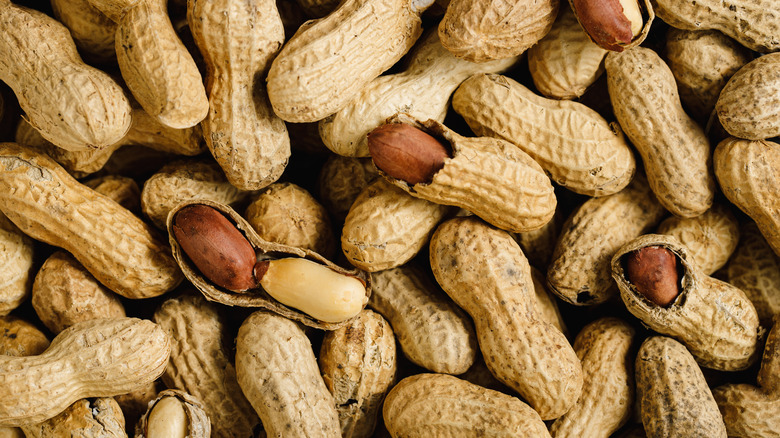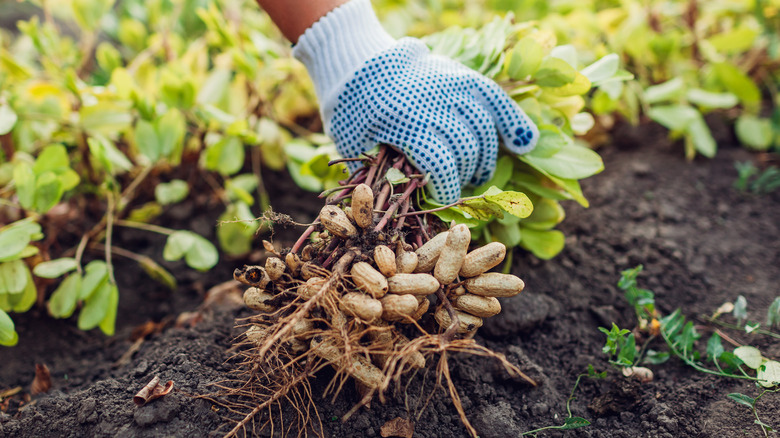Are Peanuts Actually Just Beans In Disguise?
The categorization of flora and fauna can be amazingly confusing, even when it comes to common everyday foods. If you were surprised to learn that bananas are actually berries while strawberries are not, here's another fun fact to tuck into your interesting trivia bank: Peanuts aren't nuts — at least not botanically speaking. Yes, those so-called nuts that get crushed into spreads, sprinkled in salads, and included in deliciously nutty cookies are in fact legumes. They belong to the same plant family, Leguminosae, as lima beans, lentils, and soybeans, and have more bean-like traits than we might think.
The peanut plant is a bushy specimen that hosts nitrogen-fixing bacteria in its root nodules, acting as a natural fertilizer for the soil — a defining trait of the legume family. The plant grows pods that usually contain two seeds, though it's not uncommon to find one, three, or even four peanuts in a pod, similar to other bean pods. True nuts such as hazelnuts or pecans, on the other hand, tend to grow on trees, and are defined by the USDA as having "a single seed, a hard shell, and a protective husk."
The curious case of the peanut legume
Of course, peanuts can't quite blame us for thinking they're nuts. They come in hard pods, which are thinner but not vastly different from walnut or pecan shells. Then there's their fatty, nutty taste and texture. In cooking, peanuts are used like nuts, not beans. Culinarily speaking, they certainly seem to qualify as nuts. Even their nutritional profile more closely resembles nuts than beans, with their higher protein content of 26 grams per 100 grams compared to lima beans' 8 grams per 100 grams, for example, as well as greater levels of unsaturated fat. There are definitely good reasons that the word nut is right there in their name.
Digging a little deeper (into the ground, in fact), it wouldn't be entirely unreasonable to think of peanuts as a root, either. While peanut flowers develop and pollinate above ground, once germinated, they turn into pegs that burrow into the soil to grow pods. That's why peanuts are also commonly called groundnuts. So, unlike tree nuts or other legumes, for that matter, harvesting peanuts involves pulling them from beneath the ground, which is a fairly unique feature.
Regardless of the nutty confusion, peanuts are and will continue to be wildly loved for their rich taste and nutrition profile. But the next time you spread that peanut butter on your toast, remember that this spread comes from a wonderfully quirky, unconventional plant that defies easy categorization.

